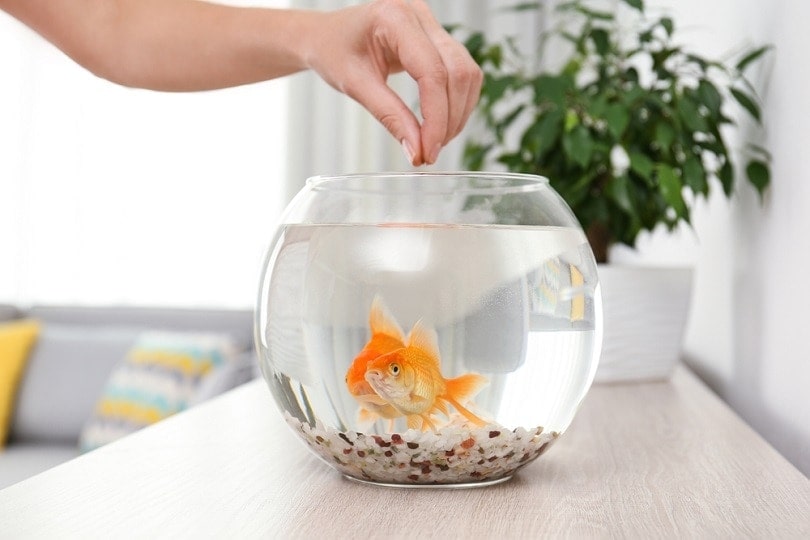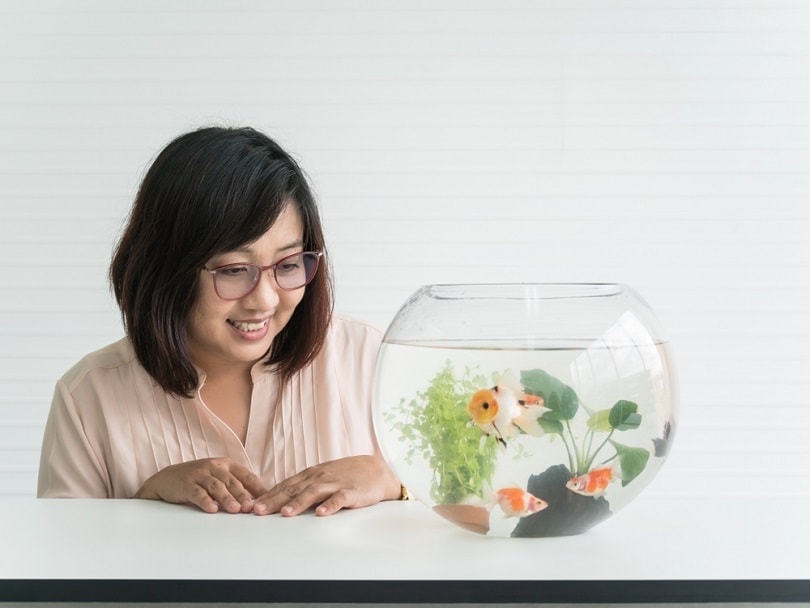How to Care For & Feed Your Fish When on Vacation: 3 Options

Updated on

For aquarium enthusiasts and the average fish owner alike, going out of town can be stressful. Knowing that your fish will be cared for is just as important as it is for a cat or a dog, but fish and aquariums in general have different needs. The good news is that when it comes to going on vacation, you have more than one great option when it comes to caring for your fish. This means you get to relax and enjoy your vacation!

What Do Your Fish Need?

Before you decide the best avenue for your fish being cared for while you’re gone, you should identify the specific needs of your aquarium. Some aquariums require more routine maintenance and checks than others. Some fish require specific feeding schedules or special foods, which can limit your feeding options. If you have a pond, the ability for those fish to find food, like insects, that your aquarium fish won’t have access to may be taken into account. Make yourself a schedule of your tank’s daily needs. If you’re going to be gone for 3 days, you may not need the same type of care as you will if you’re planning a month-long vacation.
Option #1: Automatic Feeder
- Determine the Need: Determine exactly how much food your fish need and how often they need to be fed. Also determine if your tank will require any type of maintenance while you’re gone. If it will need maintenance, then option #2 or option #3 are better options for you.
- Pick the Product: There are dozens of automatic feeders on the market, which means you have options for any kind of dry fish food. If you feed flakes, crisps, pellets, sticks, or something else, you will be able to find a feeder that can accommodate the type of food. There are even feeders on the market that can hold different foods in different chambers, allowing you to keep your fish on their normal feeding schedule, even if you rotate foods. However, if you feed your fish any kind of wet or fresh food, you will struggle to find an automatic feeder that will meet your needs. Whether you need the food kept cold or it’s too wet for a standard automatic feeder, you will have to look at option #2 or option #3. You can also find feeders that can feed multiple meals per day, different amounts per meal, for different lengths of time, and that can be used exclusively indoor or that are intended for ponds. This is why step 1 is so important to helping you pick the right product.
- Test the Feeder: Once your new automatic feeder is in your hands, it’s time to test it out! Test the feeder for at least a couple of days, and ideally, you should test it for the length of time you’re planning to be gone. You need to be able to determine if there are issues with battery life, jams, humidity and moisture buildup, and any other factors that may interfere with the ability of the feeder to keep your fish fed appropriately while you’re gone.
- Double Check: Before you leave, double check everything. Make sure your filters are functioning properly and not in need of cleaning, and make sure your heater and light are working correctly. You’ll also want to ensure your automatic feeder is stocked how it needs to be and for battery-operated feeders, it’s a good idea to go ahead and put fresh batteries in and test the settings one more time before you go, especially if you will be gone for more than a couple of days. If you have fish that don’t always get along, consider putting tank dividers in while you’re gone to keep everyone safe. Anything that you would normally be home to take care of should be addressed before you leave.
- Enjoy Your Vacation: Once you’ve double checked everything, set your feeder, and packed your bags, you’re all set to enjoy your time away!
Option #2: Pet Sitter

- Determine the Need: If you’ve determined that your tank or pond will need maintenance while you’re gone, or if your fish eat fresh, refrigerated, or wet food of some kind, then you likely need a pet sitter. When it comes to fish and aquarium care, most people won’t necessarily need someone who can come every day, but you’ll have to gauge that based on the needs of your fish and your tank. Also, if all you need is for someone to come throw a pinch of food in every day or two, then that opens up far more sitter options than if you need someone who will be comfortable performing water changes or cleaning a canister filter.
- Find Your Sitter: To find a reputable pet sitter, start by asking your aquatic friends and even people at your trusted local fish store. If you have a fish vet or agricultural vet that you use for care or even one in your area, you can ask their clinic as well. Someone around you likely knows someone who is willing to come by your house to check on your fish and do care and maintenance while you’re gone. If all you need is a quick feeding, then you may even be able to get a friend’s teenager to swing by and do it for a fair price. If your fish, tank, or pond will require more involved care, then friends with aquatic experience or your LFS are definitely your best starting points.
- Show the Ropes: Once you’ve found a pet sitter, have them come over so you can show them everything they will need to do while you’re gone. For just a quick feeding here and there, you’ll only need them to stop by for a few minutes so they can get acquainted with the parts of the house they’ll need to be in and where to find food and supplies. For something more involved, you’ll want to show them supplies as well as making sure they’re comfortable with the specific tasks you’re needing done. If your canister filter or sump setup will need cleaning or maintenance while you’re gone, then someone who only has experience with HOB filters probably will need to be clearly shown how to perform the specific task.
- Leave Written Instructions: Write down everything you need the pet sitter to remember. It’s a good idea to leave your phone number and a secondary number in case something happens. Keep in mind that a pet sitter isn’t just keeping an eye on the well-being of your fish. If they come in to a busted tank and flooded living room, they’ll need to be able to quickly get in touch with someone for instructions. There are tons of things that could happen to your fish, tank, pond, or your home while you’re gone, so write down the important details and be ready to leave a number of an accessible person in case it’s needed. Your sitter also needs to be able to ask questions, especially if they are performing tasks more involved than just feeding fish.
- Enjoy Your Vacation: Knowing that you’ve left someone you trust in charge of your fish is a relaxing feeling! It’s okay to check in with your pet sitter or to ask them to call you when they show up to care for your fish if you’re nervous about leaving your fish in the care of someone else. Do what you need to do to set your sitter up for success and yourself up for relaxation.
Option #3: Combo

- Determine the Need: After looking over the needs of your fish and tank, you’ve determined that you need an automatic feeder and someone who can come by every few days to check in and make sure things are running smoothly. A combination of a pet sitter and an automatic feeder is the best option for you!
- Pick the Product: Take all of your feeding information into account when choosing a product. Also, consider what your pet sitter will be doing. Are they going to feed a meal of fresh food when they come by? That may affect the type of automatic feeder you need.
- Find Your Sitter: Going through all trusted avenues mentioned above, find a pet sitter you can trust who is comfortable performing the tasks you’ll need done.
- Show the Ropes: Have your sitter come by so you can show them everything they’ll need to know while you’re gone.
- Test the Feeder: Test the automatic feeder for at least a couple of days. Since you’ll have someone coming by and checking in, you don’t necessarily have to test the feeder for the length of time you’re planning on being gone, but a few days of testing is a good idea.
- Double Check: Double check that the feeder is working and is stocked. Make sure any supplies your sitter might need are easily accessible and that your sitter has a way to get into the house and to get in touch with you.
- Leave Instructions: Write down thorough instructions detailing the specific tasks you expect your sitter to perform and when those tasks should be performed. If your tank needs a weekly water change, then that should be made clear to your sitter so they don’t change it too much or too little.
- Enjoy Your Vacation: A combination of a pet sitter and an automatic feeder can provide some real peace of mind while you’re on vacation. We all know that technology can fail, so having a person coming by to make sure your feeder is working correctly and your filter isn’t leaking on the floor is a good idea.
Conclusion
Leaving town and not being the one performing the care and feeding of your fish can be stressful, but these options can all help you have a stress-free vacation. Whether you choose an automatic feeder or a pet sitter (or both!), you’ll be able to relax knowing that you were thorough in your planning and prepared your fish for a stress-free time with no missed meals while you’re away.
Featured Image Credit: New Africa, Shutterstock










